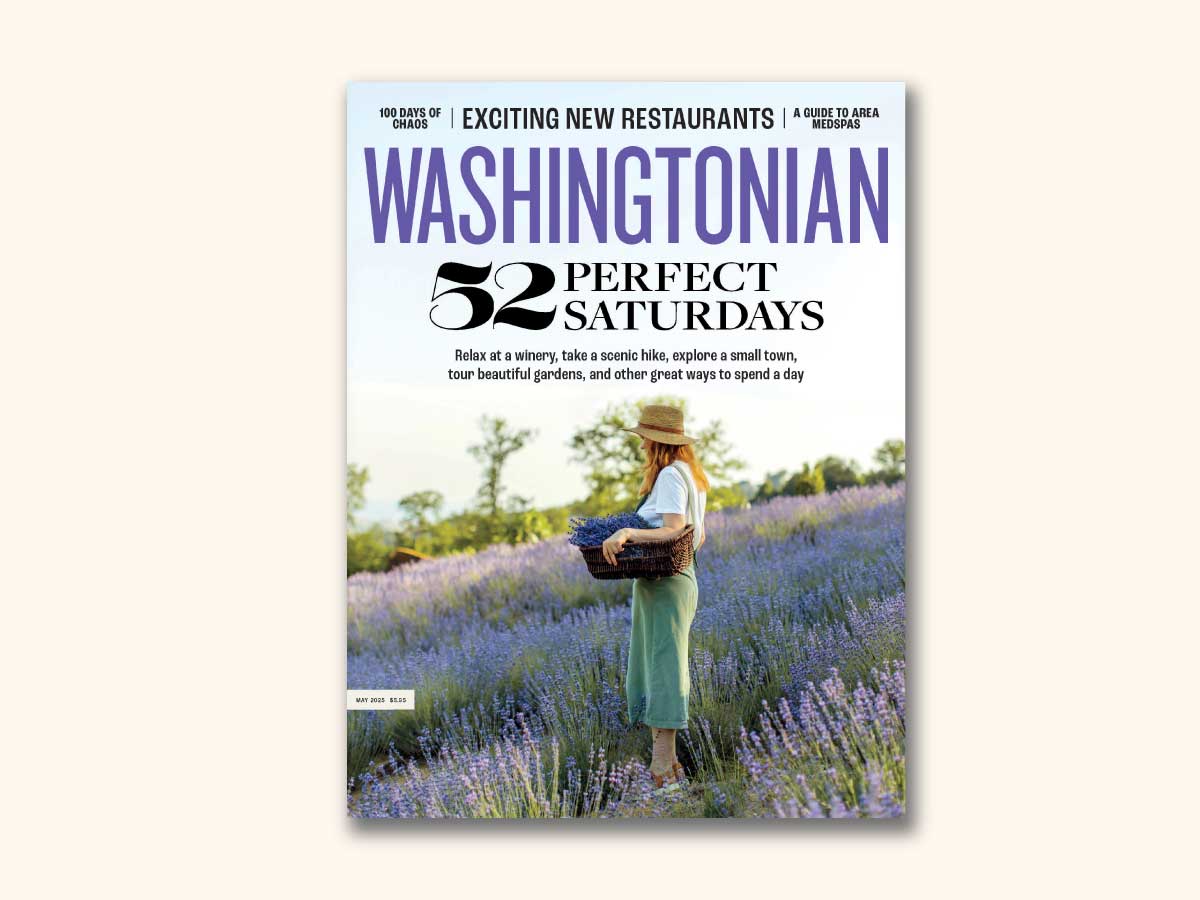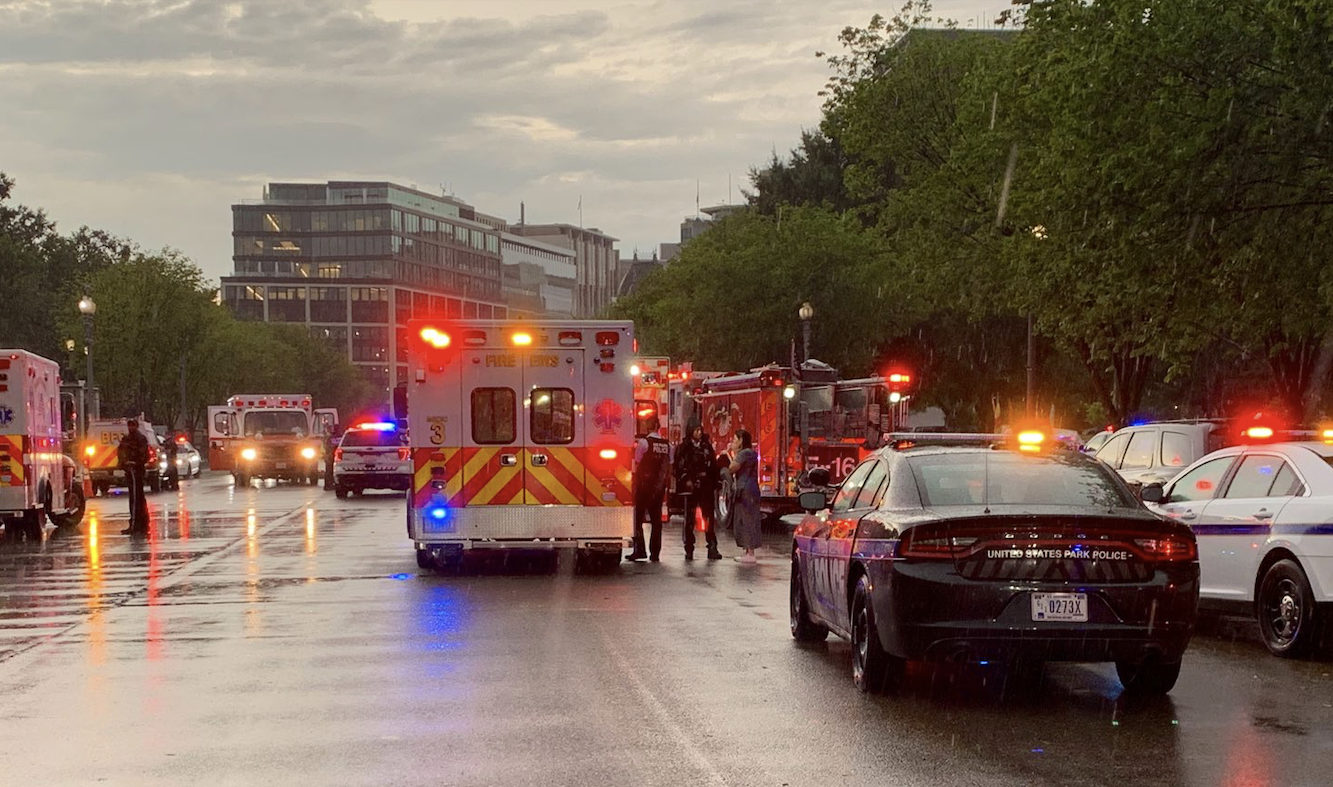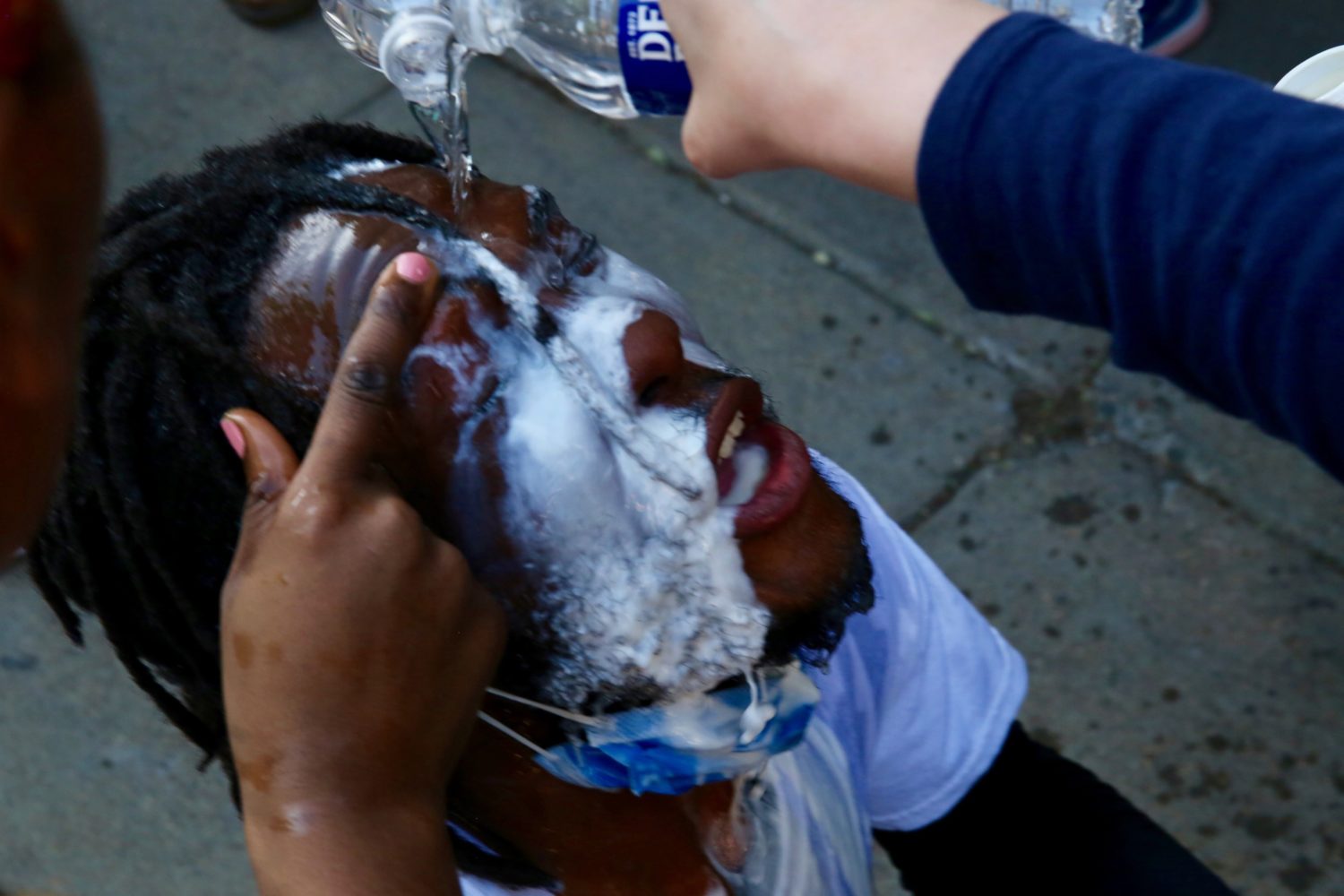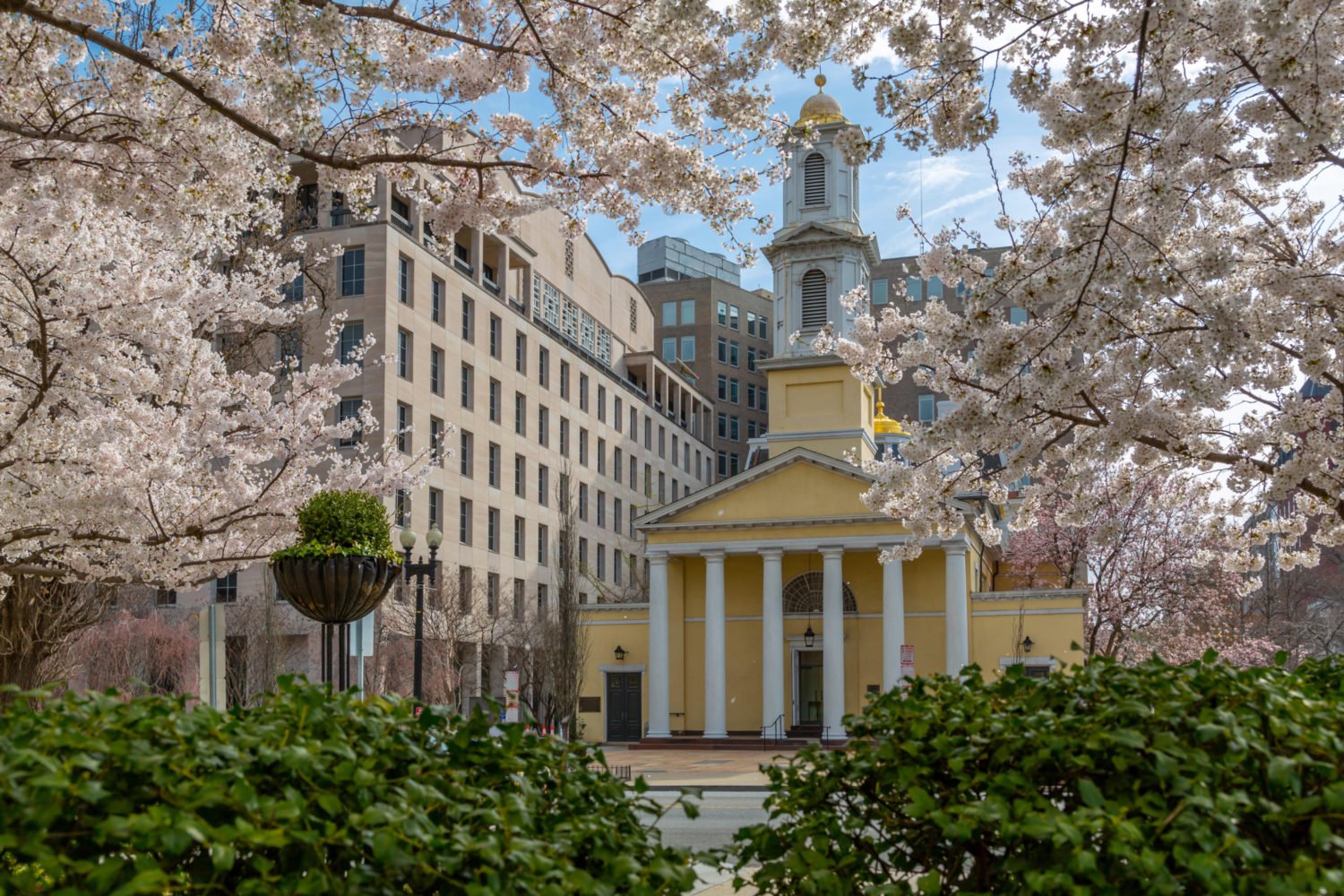When you think of damage to St. John’s Church on Lafayette Square in DC, you may think of the fire during protests against police brutality in 2020, or former President Trump’s bizarre photo op in front of the Episcopal house of worship not long afterward. What you may not think about, says its rector, the Reverend Robert W. Fisher, is birds. Visitations by the avian set, as well as insects, weather, and time, had colluded over the centuries to damage the church’s distinctive bell tower.
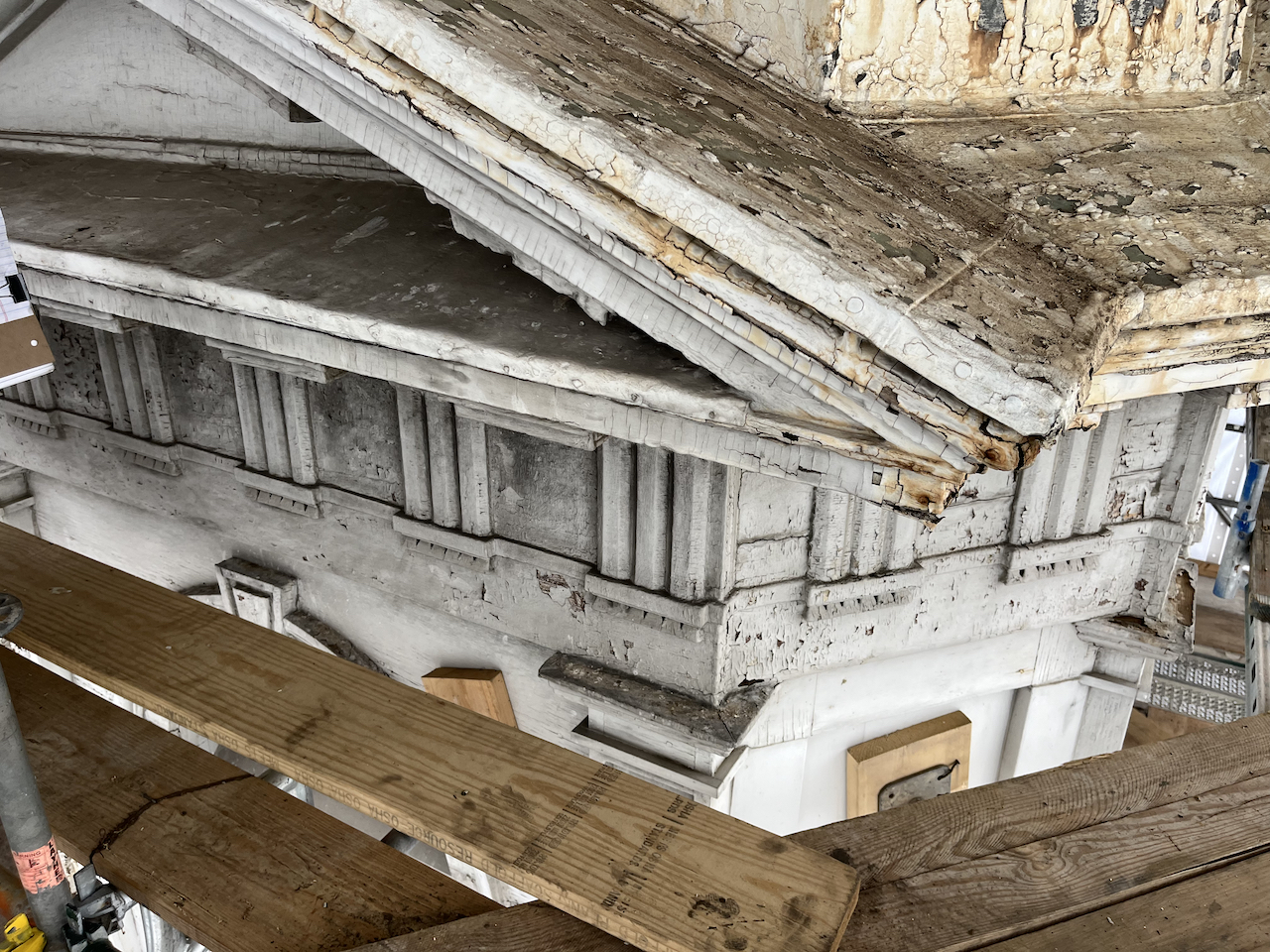
“We didn’t realize how bad it was,” Fisher says. But the tower’s wood was rotting in many places, the bolts that held its bell in place needed to be refashioned and replaced, and its dome required a fresh coat of metal. So the church sought and in 2021 received a $100,000 grant from the National Fund for Sacred Places—a program the National Trust for Historic Preservation manages in collaboration with a group called the Partners for Sacred Places—to study and plan for the tower’s renovation and hire firms and workers that specialized in historic preservation.
Several years and about $1.9 million later, the nearly thousand-pound bell, cast by Paul Revere’s son Joseph, is scheduled to ring again on Sunday afternoon when the church plans to rededicate the tower. “I’m thrilled to say that people stepped up,” Fisher says, making gifts and pledges that allowed the church to “start the project before we had the money in hand.”
St. John’s is known as the “Church of the Presidents.” It sits across the park from the White House. Benjamin Latrobe, the architect responsible for some of the most famous parts of the US Capitol, designed the church for free and volunteered as its first organist. The church was consecrated in 1816 and the bell tower was added in 1822. Every President since James Madison has attended St. John’s at least once, often on the mornings before their inaugurations. Steven Spielberg had the sound of its bell recorded for his 2012 film Lincoln, and also recorded the sounds made by a pew near the back of the church that Lincoln would slip into to pray—“Spielberg wanted to fill the movie with sounds Lincoln would have heard,” Richard Grimmett, who wrote a history of the church, told the Washington Post in 2015.

Work began on the tower this past February following the construction of what Fisher notes was quite expensive scaffolding. While a lot of the exterior wood was too damaged to be salvageable, much of the old growth Virginia yellow pine used inside the belfry was just dandy. The wood that forms the dome, he said, was beautifully fitted by the original artisans: “You can sense the hands that built it,” Fisher says. “The workmen I was with, they were just marveling at what an amazing job people were able to do.” The nails were, as usual for the time, hand-cut, and Fisher and church staff rushed to collect them as they fell during the work: “Each one tells a story,” he says.
The copper on the dome’s roof was replaced and re-gilded by craftspeople, and the bell was remounted and inspected by preservationists (President Monroe authorized a contribution of $100 toward its purchase, a quarter of the bell’s cost at the time, because it was also used to alert neighbors to fires). Workpeople removed the exterior wood and got permission from the US Commission of Fine Arts and DC’s Historic Preservation Office to replace some of it with Poly-Ash, an engineered product resistant to many of the ravages of the past. “It’s going to last for so much longer thanks to this great material,” Fisher says. They even spruced up the distinctive weathervane atop the belfry and replaced the roof’s slate shingles, which were nearing the end of their useful life–Fisher says he decided “I’d rather raise X percentage more and not have to have two sizable capital campaigns.”
Fisher grew up in California and says he developed a “real appreciation” for St. John’s in part because buildings with that kind of history are not always easy to find in the Golden State. St. John’s is one of very few buildings on the square that still serves its original purpose—the President lives across the park in another. Fisher loves seeing people sit in the pew that Lincoln often chose over the pew reserved for the President. “There aren’t many place people can go and sit where Lincoln would sit,” he notes. “And at St. John’s there are two.”

Attendees at this weekend’s rededication will receive one of those nails—”a nail that stood above the White House,” as Fisher says—that were rescued during construction. Depending on how much they gave, donors will receive blocks of wood from the tower or pens made from salvaged timber. The historian Sean Wilentz will speak, as will Carol Quillen, the president and CEO of the National Trust for Historic Preservation, who happens to be a parishioner. DC Mayor Muriel Bowser will be there. And the tall AFL-CIO building that shares the church’s block will open for people who want to ascend to get an aerial view of the work. There will be music. A rare Childe Hassam painting that features St. John’s will be on display, and the neighboring Hay-Adams hotel will donate a cake. The bell will get its first official post-renovation ringing.

St. John’s bell tower will be rededicated at a ceremony on Sunday, October 20, at 12:30 PM.








